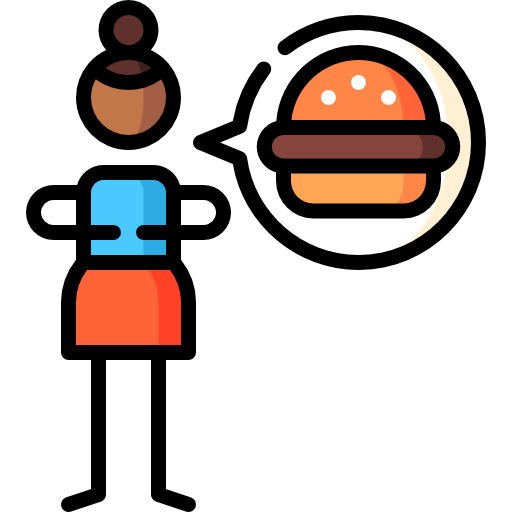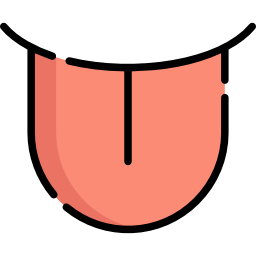PART A_1
Let’s introduce ourselves to each other.
自己紹介をしましょう。
PART A_2
My name is ________________. What is your name?
PART A_3
I am ________________. Nice to meet you.
PART A_4
Nice to meet you too, ________________. Let’s begin our lesson!
PART B_1
We’ll read aloud the words and expressions below. Please repeat after me.
I will check your pronunciation.
I will check your pronunciation.
単語、表現を音読します。講師に続いて読みましょう。講師は発音を確認します。
(Please send the mispronounced words and expressions to your student.)
PART B_2

|
homeroom teacher
クラス担任
|

|
study
勉強する
|

|
subject
科目
|

|
homework
宿題
|
 |
test
試験
|
PART B_3
Now, let’s review some words from part B_2.
ではいくつかの単語を復習してみましょう。
(Please review the mispronounced words and expressions from part B_2.)
PART B_4
PART C_1
We’ll read aloud the sentences below. I will check your pronunciation and intonation.
文を読みます。講師が発音、イントネーションについて確認します。
(Please send the mispronounced words and expressions to your student.)
PART C_2
| 1. | My favorite subject is ~. |
| 2. | good at ~ |
| 3. | My homeroom teacher is ~. |
| 4. | What’s your ~ teacher like? |
| 5. | When is your next test? |
| 6. | My next test is in/on ~. |
PART C_3
Now, let’s review some words and expressions from part C_2.
ではいくつかの単語、文章を復習してみましょう。
(Please review the mispronounced words and expressions from part C_2.)
PART C_4
PART D_1
We’ll read aloud the dialogue below. I will check your pronunciation and intonation.
会話文を読みましょう。講師が発音、イントネーションについて確認します。
(Please send the mispronounced words and expressions to your student.)
PART D_2
| Tutor: | What is your favorite subject? |
| Student: | My favorite subject is English but I am also good at science. I have to study for my test and do my homework later. When is your next test? |
| Tutor: | My next test is on Friday. By the way, who is your homeroom teacher? And what’s your homeroom teacher like? |
| Student: | My homeroom teacher is Ms. Robins. She is kind and friendly. |
PART D_3
Now, let’s review some words and expressions from part D_2.
ではいくつかの単語、文章を復習してみましょう。
(Please review the mispronounced words and expressions from part D_2.)
PART D_4
PART D_5
Please fill in the blanks and read aloud the dialogue. I will check your pronunciation and intonation.
空欄を埋めて、会話文を読みましょう。講師が発音、イントネーションについて確認します。
PART D_6
| Tutor: | What is your favorite subject? |
| Student: | My _____________ is English but I am also _________ science. I have to study for my test and do my homework later. When is your next test? |
| Tutor: | My next test is on Friday. By the way, who is your homeroom teacher? And what’s your homeroom teacher like? |
| Student: | My ________________ is Ms. Robins. She is beautiful and ________. |
PART D_7
Now, let’s review your answers.
では、あなたの答えを復習してみましょう。その後、修正したあなたの答えを読んでみましょう。
(Please review your student’s answers by sending the correct answers in complete sentences. After that, ask your student to read aloud his or her corrected answers.)
PART D_8
PART E_1
Now, please fill in the blanks to answer the following questions.
I will check if your sentences are complete and if the grammar is correct.
I will check if your sentences are complete and if the grammar is correct.
空欄を埋めて、質問に答えましょう。講師は文法と完全な文章であるかを確認します。
PART E_2
| 1. | Who is your English teacher? |
| Answer: | My ____________________ is ____________________. |
| 2. | Do you have an English test today? |
| Answer: | ____________________. We ____________________ an English test today. |
PART E_3
Now, let’s review your answers.
では、あなたの答えを復習してみましょう。その後、修正したあなたの答えを読んでみましょう。
(Please review your student’s answers by sending the correct answers in complete sentences. After that, ask your student to read aloud his or her corrected answers.)
PART E_4
PART E_5
Now, please make complete sentences to answer the following questions.
I will check if your sentences are complete and if the grammar is correct.
I will check if your sentences are complete and if the grammar is correct.
次に、質問に答えるために完全な文を作ります。講師は文法と完全な文章であるかを確認します。
(Please send the sentences that need grammar corrections to your student.)
PART E_6
| 1. | Where is the music room? | |
| Answer: | . | |
| 2. | Where will you study? | |
| Answer: | . |
PART E_7
Now, let’s review your answers.
では、あなたの答えを復習してみましょう。その後、修正したあなたの答えを読んでみましょう。
(Please review your student’s answers by sending the correct answers in complete sentences. After that, ask your student to read aloud his or her corrected answers.)
PART E_8
PART F_1
Now, you will ask me the questions below. Fill in the blanks to complete the sentences. I will check if your sentences are complete and if the grammar is correct.
あなたが講師に質問します。完全な文章になるように空欄を埋めましょう。
講師は文法と完全な文章であるかを確認します。
講師は文法と完全な文章であるかを確認します。
(Please send the sentences that need grammar corrections to your student.)
PART F_2
| 1. | ______ you want to _________ in _________? |
| Tutor: | Yes, studying in the library is a good idea. |
| 2. | ____________________ borrow your book? |
| Tutor: | Sure, no problem. |
PART F_3
Now, let’s review your answers.
では、あなたの答えを復習してみましょう。その後、修正したあなたの答えを読んでみましょう。
(Please review your student’s answers by sending the correct answers in complete sentences. After that, ask your student to read aloud his or her corrected answers.)
PART F_4
PART F_5
Now, you will make questions.
I will check if your sentences are complete and if the grammar is correct.
I will check if your sentences are complete and if the grammar is correct.
次に講師に質問するために完全な文を作ります。講師は文法と完全な文章であるかを確認します。
(Please send the sentences that need grammar corrections to your student.)
PART F_6
| Student: | When | ? | |
| Tutor: | I’m going to do my homework on Saturday. | ||
| Student: | Where | ? | |
| Tutor: | Our English class is at room 203. |
PART F_7
Now, let’s review your answers.
では、あなたの答えを復習してみましょう。その後、修正したあなたの答えを読んでみましょう。
(Please review your student’s answers by sending the correct answers in complete sentences. After that, ask your student to read aloud his or her corrected answers.)
PART F_8
PART G_1
Let’s do a role play with the given situations.
以下の設定でロールプレイをしましょう。
PART G_2
| Situation 1: |
You have a science test tomorrow. Please ask your classmate to study with you.
明日理科のテストがあります。クラスメイトに一緒に勉強しないか誘ってみましょう。
(Your tutor will pretend to be your classmate.)
|
| Items to mention: |
– where you want to study – when you want to study |
PART G_3
| Situation 2: |
You want to meet your sister’s/brother’s homeroom teacher. Please ask your sister/brother about her/his homeroom teacher.
あなたはあなたの兄弟/姉妹の担任の先生に会ってみたいと思っています。兄弟/姉妹に、彼/彼女の担任の先生がどんな人か尋ねましょう。
(Your tutor will pretend to be your sister/brother.)
|
| Items to mention: |
– the name of the homeroom teacher – what his/her homeroom teacher is like |
PART G_4
| Situation 3: |
You are talking with your friend. Please ask him/her about his/her favorite subject.
あなたは友達と話しています。彼/彼女の好きな教科について尋ねましょう。
(Your tutor will pretend to be your friend.)
|
| Items to mention: |
– what your friend’s favorite subject is – what subject he/she is good at |

































